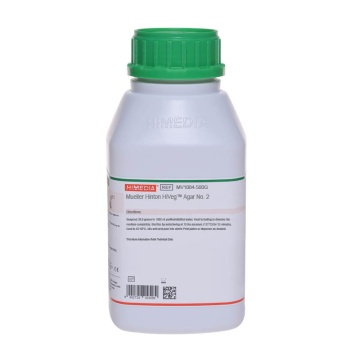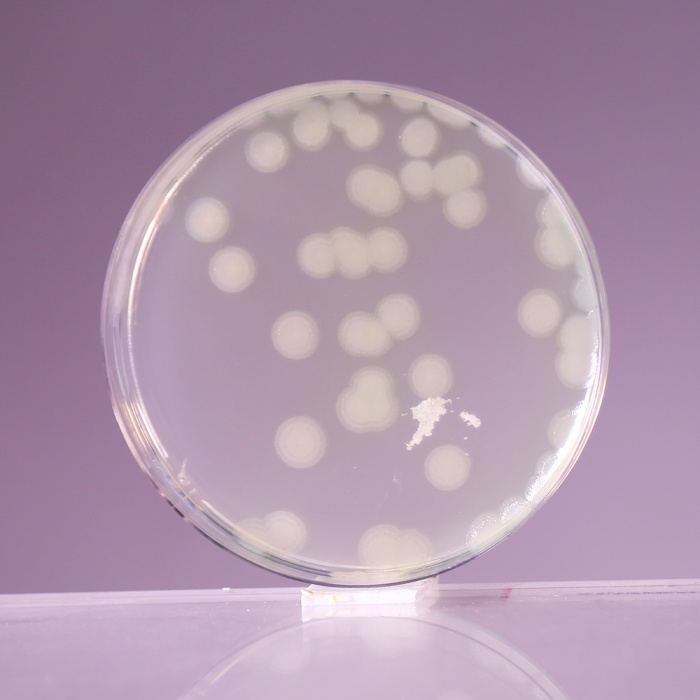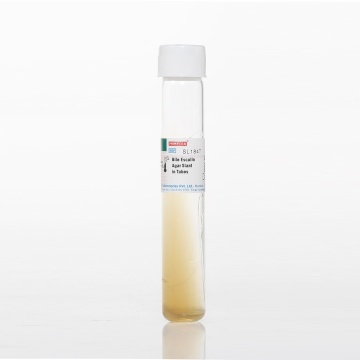 Your enquiry has been submitted
Your enquiry has been submitted
Coliform Broth w/ SLS
Intended Use
Recommended for detection of E.coli and other Enterobacteriaceae in water samples.
Composition**
| Ingredients | g / L |
|---|---|
| Special peptone | 3.000 |
| Sodium chloride | 5.000 |
| Dipotassium hydrogen phosphate | 3.000 |
| Potassium dihydrogen phosphate | 1.700 |
| Sodium puruvate | 1.000 |
| L-Tryptophan | 1.000 |
| Sodium lauryl sulphate (SLS) | 0.100 |
| Chromogenic mixture | 0.300 |
Final pH (at 25°C): 6.8±0.2
**Formula adjusted, standardized to suit performance parameters
Directions
Suspend 15.10 gram in 1000 ml purified/distilled water. Heat if necessary to dissolve the medium completely. Dispense into tubes or flasks as desired. Sterilize by autoclaving at 15 lbs pressure (121ºC) for 15 minutes.
Principle And Interpretation
Coliform Broth w/SLS is a selective medium recommended for the simultaneous detection of Escherichia coli and total coliforms in water and food samples (1).
Special peptone supplies the essential growth nutrients to the organisms. The phosphates in the medium buffers the medium. Sodium chloride maintains the osmotic balance. Sodium lauryl sulphate inhibits the gram positive organisms. L-Tryptophan in the medium improves the indole reaction. The enzyme ß-glucuronidase produced by E.coli cleaves X-glucuronide thus imparting blue colour to the medium (2,3,4). Formation of cherry red colour after addition of few drops (0.5ml) of Kovac's reagent (R008) to the medium indicates the presence of E.coli.
Type of specimen
Water samples
Specimen Collection and Handling
For water samples, follow appropriate techniques for sample collection, processing as per guidelines and local standards (5). After use, contaminated materials must be sterilized by autoclaving before discarding.
Warning and Precautions
Read the label before opening the container. Wear protective gloves/protective clothing/eye protection/face protection. Follow good microbiological lab practices while handling specimens and culture. Standard precautions as per established guidelines should be followed while handling specimens. Safety guidelines may be referred in individual safety data sheets.
Limitations
- ß-glucuronidase is present in 97% of E.coli strains, however few E.coli may be negative.
- Some species may show poor growth due to nutritional variations.
- Further identification must be carried out for confirmation.
Performance and Evaluation
Performance of the medium is expected when used as per the direction on the label within the expiry period when stored at recommended temperature.
Quality Control
Appearance: Cream to yellow homogeneous free flowing powder
Colour and Clarity of prepared medium: Cream, clear to slightly opalescent solution, may have slight precipitate.
Reaction: Reaction of 1.51% w/v aqueous solution at 25°C. pH : 6.8±0.2
pH: 6.60-7.00
Cultural Response
Cultural characteristics observed after an incubation at 35-37°C for 18-24 hours.
| Organism | Inoculum (CFU) | Growth | Colour of Medium |
|---|---|---|---|
| Shigella flexneri ATCC 12022 (00126*) | 50-100 | luxuriant | colourless |
| Staphylococcus aureus subp aureus ATCC 25923 (00034*) | >=10⁴ | inhibited | |
| Enterococcus faecalis ATCC 29212 (00087*) | >=10⁴ | inhibited | |
| Citrobacter freundii ATCC 8090 | 50-100 | luxuriant | coloreless |
| Escherichia coli ATCC 25922 (00013*) | 50-100 | luxuriant | blue |
| Salmonella Enteritidis ATCC 13076 (00030*) | 50-100 | good | colourless |
| Escherichia coli ATCC 35218 | 50-100 | luxuriant | blue |
| Klebsiella pneumoniae ATCC 13883 (00097*) | 50-100 | luxuriant | coloureless |
| Staphylococcus aureus subp aureus ATCC 6538 (00032*) | >=10⁴ | inhibited |
Key : (*) Corresponding WDCM numbers.
Storage and Shelf Life
Store between 15-25°C in a tightly closed container and the prepared medium at 2-8°C. Use before expiry date on the label. On opening, product should be properly stored dry, after tightly capping the bottle in order to prevent lump formation due to the hygroscopic nature of the product. Improper storage of the product may lead to lump formation. Store in dry ventilated area protected from extremes of temperature and sources of ignition Seal the container tightly after use. Product performance is best if used within stated expiry period.
Disposal
User must ensure safe disposal by autoclaving and/or incineration of used or unusable preparations of this product. Follow established laboratory procedures in disposing of infectious materials and material that comes into contact with sample must be decontaminated and disposed of in accordance with current laboratory techniques (6,7).
Reference
- Manafi M. and Kneifel W., 1989, Zentralbl. Hyg., 189:225.
- Frampton E. W., Restaino L. and Blaszko N., 1988, J. Food Prot., 51:402.
- Kilian M. and Bülow P., 1976, Acta. Pathol. Microbiol. Scand., Sect. B, 84:245.
- LeMinor L. and Hamida F., 1962, Ann. Inst. Pasteur (Paris), 102:267.
- Lipps WC, Braun-Howland EB, Baxter TE,eds. Standard methods for the Examination of Water and Wastewater, 24th ed. Washington DC:APHA Press; 2023.
- Isenberg, H.D. Clinical Microbiology Procedures Handbook 2nd Edition.
- Jorgensen, J.H., Pfaller, M.A., Carroll, K.C., Funke, G., Landry, M.L., Richter, S.S and Warnock., D.W. (2015) Manual of Clinical Microbiology, 11th Edition. Vol. 1.
| Product Name | Coliform Broth w/ SLS |
|---|---|
| SKU | M1826 |
| Product Type | Regular |
| Physical Form | Powder |
| Origin | Animal |
| Packaging type | HDPE |
| References | 1.Mueller J. H. and Hinton J., 1941, Proc. Soc. Exp. Biol. Med., 48:330.2.Method for Antifungal Disk Diffusion Susceptibilty Testing of yeasts; Approved Guideline Second Edition M44-A2 Vol.24No.17.3.Present Status and Future Work, WHO Sponsored collaborative study, Chicago, Oct. 1967.4.Bauer A. W., Kirby W. M., Sherris J. L. and Turck M., 1966, Am. J. Clin. Pathol., 45:493. |
| Customized Product Available | No |












